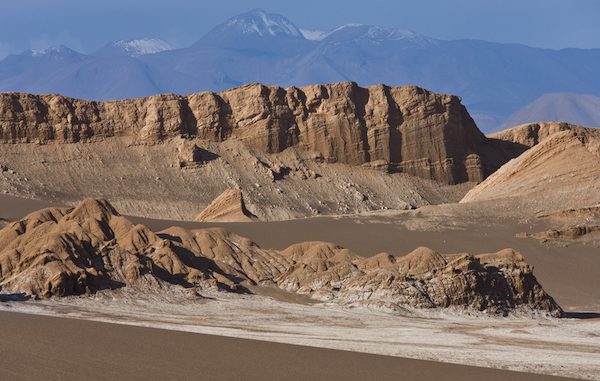


Image ID 15390502 © Steve Allen | Dreamstime.com
The Atacama Desert in Chile is the driest desert region on Earth, with a staggering lack of precipitation. Apart from the hazards of dehydration, there’s another danger: large slabs of glass scattered across the bone-dry land.
A team of researchers from Brown University have stated that they’ve discovered the origins of this otherwise pretty mysterious material, spread across the land in shades of dark green or black.
Through studying the distribution and composition of the glass, they’ve determined that it’s most likely they were created by an ancient comet that exploded over the area.
The intense heat and pressure from this explosion were enough to fuse over 75km (46.6 miles) of sandy soil into glass, according to the study published in the journal Geology.
Before, it had been speculated that the glass was formed after wildfires that reached high enough temperatures to melt the sand into glass. However, this was disproven in the research: analysis showed the mineral zircons, that had thermally decomposed to make baddeleyite.
This process requires temperatures upwards of 3,000 degrees Fahrenheit, which is much more than a fire would’ve contained.
Plus, samples showed that the material contained “tiny fragments” with minerals often found in extraterrestrial rocks. An example comes in the form of material gathered by NASA’s Stardust mission, which took particles from a comet called Wild 2.
“Those minerals are what tell us that this object has all the markings of a comet,” explains Scott Harris, planetary geologist and study co-author. “To have the same mineralogy we saw in the Stardust samples entrained in these glasses is really powerful evidence that what we’re seeing is the result of a cometary airburst.”
Specifically, this includes minerals like cubanite, troilite and calcium-aluminum-rich inclusions.
“This is the first time we have clear evidence of glasses on Earth that were created by the thermal radiation and winds from a fireball exploding just above the surface,” states Pete Schultz, a professor from the university’s Department of Earth, Environmental and Planetary Sciences.
“To have such a dramatic effect on such a large area, this was a truly massive explosion. Lots of us have seen bolide fireballs streaking across the sky, but those are tiny blips compared to this.”
Further research is needed to find the exact ages of the glass, which would also show when the explosion took place. For now, tentative dating indicates that it might’ve happened around time that large mammals disappeared from the region.
While it’s still “too soon” to say if there indeed was a connection, it would’ve meant that there’s a possibility that early inhabitants who had just arrived in the area were actually able to witness the comet exploding.
As Schultz puts it, “it would have been quite a show.”
[via

Leave a Reply